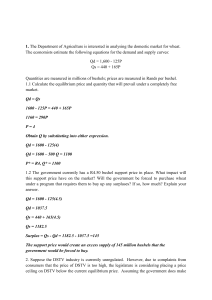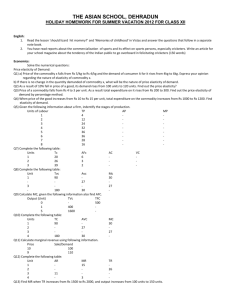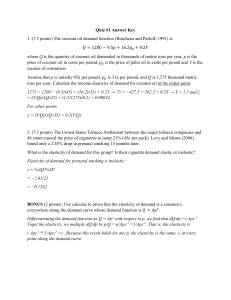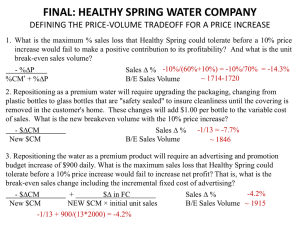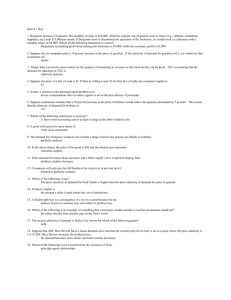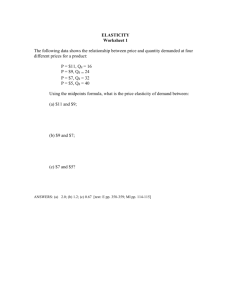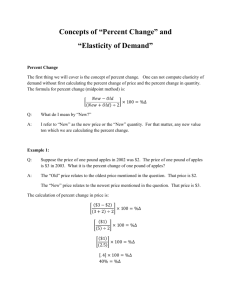Economics: Price Elasticity Exam
advertisement
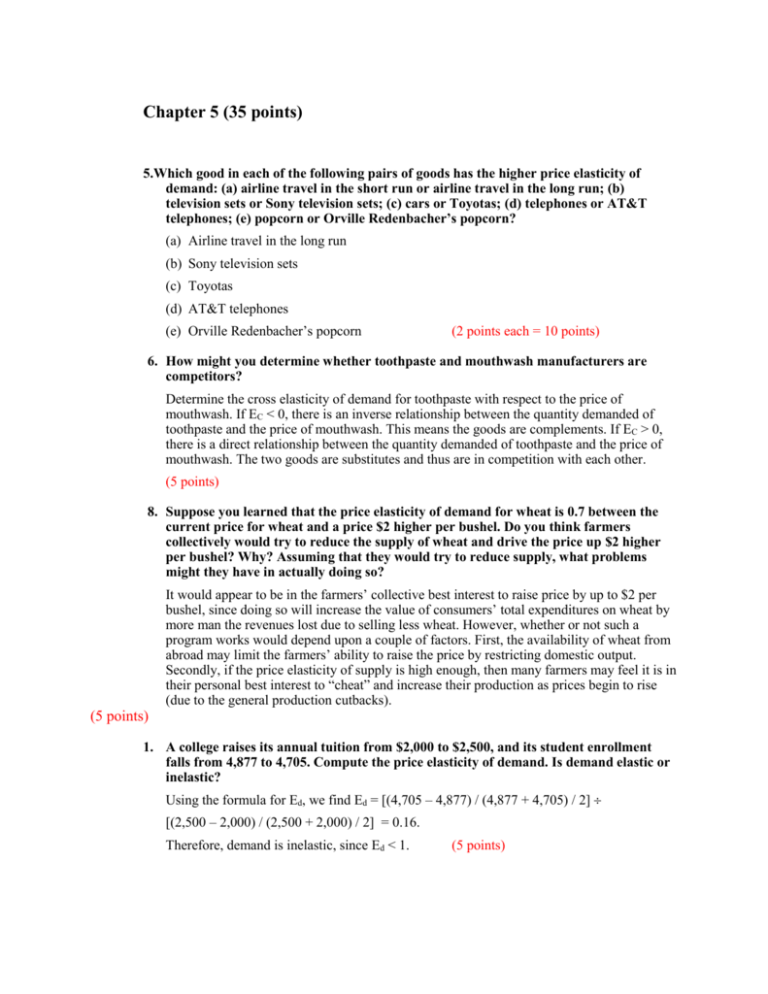
Chapter 5 (35 points) 5.Which good in each of the following pairs of goods has the higher price elasticity of demand: (a) airline travel in the short run or airline travel in the long run; (b) television sets or Sony television sets; (c) cars or Toyotas; (d) telephones or AT&T telephones; (e) popcorn or Orville Redenbacher’s popcorn? (a) Airline travel in the long run (b) Sony television sets (c) Toyotas (d) AT&T telephones (e) Orville Redenbacher’s popcorn (2 points each = 10 points) 6. How might you determine whether toothpaste and mouthwash manufacturers are competitors? Determine the cross elasticity of demand for toothpaste with respect to the price of mouthwash. If EC < 0, there is an inverse relationship between the quantity demanded of toothpaste and the price of mouthwash. This means the goods are complements. If EC > 0, there is a direct relationship between the quantity demanded of toothpaste and the price of mouthwash. The two goods are substitutes and thus are in competition with each other. (5 points) 8. Suppose you learned that the price elasticity of demand for wheat is 0.7 between the current price for wheat and a price $2 higher per bushel. Do you think farmers collectively would try to reduce the supply of wheat and drive the price up $2 higher per bushel? Why? Assuming that they would try to reduce supply, what problems might they have in actually doing so? It would appear to be in the farmers’ collective best interest to raise price by up to $2 per bushel, since doing so will increase the value of consumers’ total expenditures on wheat by more man the revenues lost due to selling less wheat. However, whether or not such a program works would depend upon a couple of factors. First, the availability of wheat from abroad may limit the farmers’ ability to raise the price by restricting domestic output. Secondly, if the price elasticity of supply is high enough, then many farmers may feel it is in their personal best interest to “cheat” and increase their production as prices begin to rise (due to the general production cutbacks). (5 points) 1. A college raises its annual tuition from $2,000 to $2,500, and its student enrollment falls from 4,877 to 4,705. Compute the price elasticity of demand. Is demand elastic or inelastic? Using the formula for Ed, we find Ed = [(4,705 – 4,877) / (4,877 + 4,705) / 2] [(2,500 – 2,000) / (2,500 + 2,000) / 2] = 0.16. Therefore, demand is inelastic, since Ed < 1. (5 points) 2. As the price of good X rises from $10 to $12, the quantity demanded of good Y rises from 100 units to 114 units. Are X and Y substitutes or complements? What is the cross elasticity of demand? Using the formula for Ec, we find Ec = [(100 – 114) / (114 + 100) / 2] [(10 – 12) / (12 + 10) / 2] = 0.72. Therefore, X and Y are substitutes, since Ec > 0. (5 points) 4. The quantity supplied of a good rises from 120 to 140 as price rises from $4 to $5.50. What is price elasticity of supply? Using the formula for Es, we find Es = [(120 – 140) / (120 + 140) / 2] [(4 – 5.5) / (4 + 5.5) / 2] = 0.487. (5 points)
